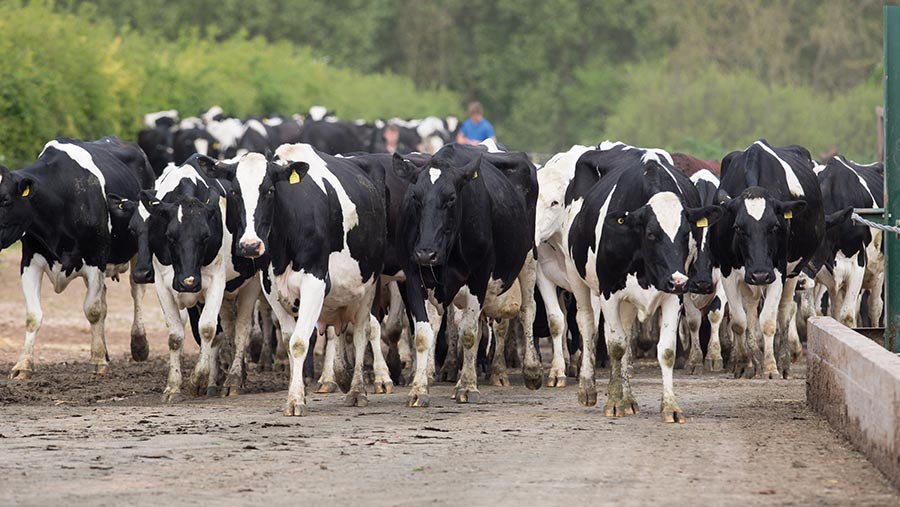Foul-in-the-foot in cattle: Treatment and prevention
 © Tim Scrivener
© Tim Scrivener Foul-in-the-foot is a bacterial infection found between the digits in cattle and can cause severe lameness.
It affects the tissues under the skin in this area, causing severe pain, swelling of the foot and marked lameness.
Capontree Veterinary Centre vet David McCrea, offers advice on how to spot and treat the infection and how to prevent future outbreaks.
See also: How to tackle chronic dairy cow lameness and mobility
Foul is a common cause of lameness in youngstock and fattening units.
Among dairy cows it can be common in young heifers that have recently been introduced to the herd, but it can occur at any age and is found throughout the year in housed and grazing cows.
The infection is caused by bacteria that are normal components of the cow’s environment. The bacteria invade through sites of injury and inflamed skin.
So, an environment that aids the damage or softening of the interdigital skin increases the spread of the disease.
Such adverse environments can range from dry hard ground to wet, muddy areas around gates and troughs.
Clinical signs
There are several signs to look out for:
- Swelling of the feet, particularly at the front
- Increased temperature
- Sudden, severe lameness, usually in one limb only
- Reduced feed intake, leading to significantly reduced milk yield or weight gain
- A characteristic foul odour coming from the skin between the claws.
Diagnosis
A diagnosis can be made based on the clinical signs after examining the foot closely to exclude traumatic injury, foreign body penetration or bruising of the heels.
Treatment
Treat early. Complications, such as joint involvement, are much more common if treatment is delayed.
Many antibiotics are effective against foul, while injections of anti-inflammatories significantly improve cow wellbeing and help to restore the cow to normal production more quickly.
Prevention
The bacteria associated with foul-in-the-foot are widespread in the environment and eradication is therefore impossible. The aim of prevention must be to reduce incidence to a minimum.
- This can be achieved by:
- Improving walkways and tracks – a good walkway needs only to be one cow wide
- Filling in muddy and stony areas around troughs and gateways
- In housing, ensuring no pooling of slurry or water, and scraping efficiently at least twice a day
- Keeping cattle feet as clean as possible.
Copper sulphate or formalin foot-baths may help if there is a significant problem, but ask your vet for advice before using these.
Further help
If you are having lots of issues with lameness in your herd, AHDB has trained mobility mentors who work with their dairy farmers to reduce the causes of lame feet, using the Healthy Feet Programme.
What is the AHDB Healthy Feet Programme?
The AHDB Healthy Feet Programme is a stepwise approach to help you identify the cause of lameness on your farm, devise an action plan and develop the skills needed for long-term lameness control.
You can find an AHDB mobility mentor in your area online.
About the author

David McCrea BVM&S MRCVS is a director at Capontree Veterinary Centre. He qualified from Edinburgh University and has worked in Scotland, Australia and Northern Ireland. He has gained a wide knowledge of farming and farm practices and enjoys working closely with farmers trying to improve the health of their animals.
